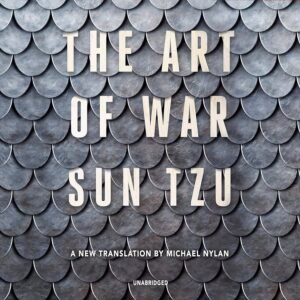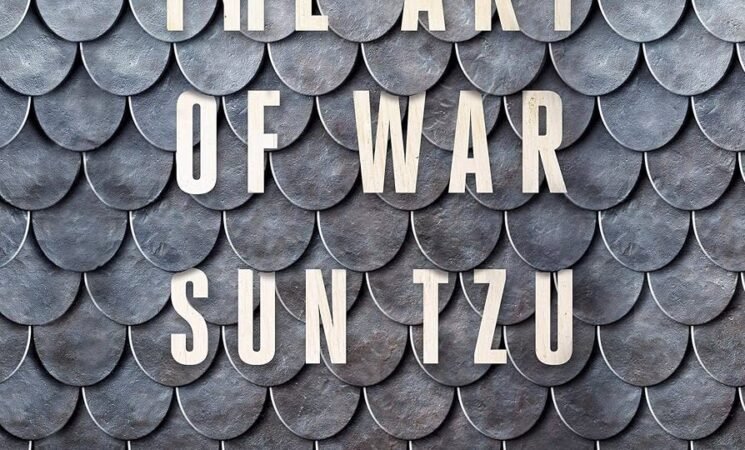Michael Nylan (2020) The Art of War: A New Translation by Michael Nylan, W. W. Norton & Company
Sabeen Azam
 This book, which is known as The Art of War appertaining to the 5th century BCE, authored by Sun Tzu, is a classic publication in the study of strategy, leadership, and human behavior. It’s laconic, at the same time profound remarks on warfare, diplomacy, and competitive processes have been contemplated by generals, policymakers, managers and philosophers throughout centuries. The more recent translation by Michael Nylan (2020) is scholarly based on modern scholarship and recent archaeological finds, such as unearthed bamboo manuscripts, which put the text into a wider context of the intellectual traditions of ancient China. In his work, Nylan reveals the philosophical background behind the maxims of Sun Tzu, patently dislodging more operational or military possible understanding as commonly occurred in Western translations.
This book, which is known as The Art of War appertaining to the 5th century BCE, authored by Sun Tzu, is a classic publication in the study of strategy, leadership, and human behavior. It’s laconic, at the same time profound remarks on warfare, diplomacy, and competitive processes have been contemplated by generals, policymakers, managers and philosophers throughout centuries. The more recent translation by Michael Nylan (2020) is scholarly based on modern scholarship and recent archaeological finds, such as unearthed bamboo manuscripts, which put the text into a wider context of the intellectual traditions of ancient China. In his work, Nylan reveals the philosophical background behind the maxims of Sun Tzu, patently dislodging more operational or military possible understanding as commonly occurred in Western translations.
Overview of Thematic Ideas
The Art of War by Sun Tzu consists of thirteen chapters, each of which covers some of the fundamental aspects of war and strategy. The work underlines the worth of the tactical reserve, situational awareness, and intelligence and puts knowledge before brute force at its heart. Among the most recognizable ideals of it says that the supreme act of warfare is achieved when an enemy is defeated without even being involved in the war. Key themes comprise strategic planning- the focus being on the capability of a good leader to foresee, make good decisions, make use of time as a strategic resource. The other main point which is being made is the importance of knowledge and deception where deception is an important source of war. Leadership and morale is also prominent as the text supports the idea of having ethical leaders who are trustful to those below them and are collected, as this leads to success of an organization. Also, the second value is variability, where flexibility and responsiveness to fluctuations is essential to survival and success. Finally, Sun Tzu emphasizes that familiarity with the environment and terrain is an important area to understand about being able to navigate and position within the battle. These eternal principles have had an impact on the lives of the ancient Chinese warlords, Napoleon Bonaparte, and they are the foundation of the modern military theorists. Off the battlefield, they have been applied in various arenas like corporate strategy, diplomacy, management of martial art schools and even in sports like archery.
Study of Modern Relevance
The Art of War is a book written by Sun Tzu, way before the current world of hyper-competition and globalization, yet has been used in most spectacular ways in areas completely dissimilar to war. Its ideologies have taken a leading role in different modern fields. In business strategy, business leaders tend to take a comparison of business competition to the battlefield and use Sun Tzu thoughts of going after an opponent strategy not structure. This agrees with current strategy like disruptive innovation, strategic brand positioning which is reflected by introduction of the Apple iPhone brand which transformed various industries at once in a way that was indirect but effective in a way that Sun Tzu proposed. Moral authority, wise communication and leading by example stressed by Sun Tzu in leadership and organization behavior practice as discussed by Sun Tzu are echoed in leadership models developed in contemporary times such as transformational and servant leadership models. In a similar vein, his doctrine on the creation of leverage, the allies, and the evasion of actual battle by means of psychological upper hand and timing are often utilized by the mediators and diplomats in the field of negotiation and resolution of the conflict. The communication tool, the modular structure and the aphoristic style of The Art of War render its teachings extremely transportable to any field of study, but the same can be abused in an oversimplification trap unless being subjected to critical discussion. In the end, the work of Sun Tzu cannot really be seen as teaching a certain set of tactics, rather as a way of developing a strategic way of thinking which is becoming more and more important in the modern world of constant changes and uncertainties.
Critical Reception
This translation by Michael Nylan (2020) has been said by sinologists as well as strategists to be philologically sure-footed and rich in interpretation. She returns the philosophical basis of the text to it, which was frequently romanticized or militarized in earlier editions, and establishes connections with Confucianism, Daoism, and early Chinese politics. Her commentary has much to offer in the way of historical context, and also explains the ways in which the important passages are commonly misunderstood. The New York Review of Books and Asian Studies Review reviews praise Nylan for avoiding the urge of adapting the text to modern popularities in business. She does not do that, but let’s those nuances of the original show so that they prompt critical thought, not surface usage. Nevertheless, criticism still exists on the misapplication of The Art of War in mainstream culture and management publications in which the cherry-picked quotations are out of the context of the strategic thinking of the work as a whole. This commodification has, at least, blurred its signification and washed the philosophical elegance.
Personal Reflection
Being a strategic treatise, The Art of War provides the readers with a combination of universal knowledge and the subjective application. What makes it so enduringly relevant is the ability to engage the reader into reflection as opposed to formulaic thinking in resolving issues. The 2020 Nylan edition perfects this experience by deconstructing the seemingly mystic elucidations on ancient Chinese politics and fosters the knower of ancient Chinese ideology to face the philosophies of power and control amidst ethical complexity. Looking at the book as a reader, one must point out that it is quite accessible thanks to being short and understandable. It, however, requires critical interpretation. It is deeply satisfying to those who want to put effort into seeing what its deeper interpretations are. The work also targets military practitioners and corporate heads besides institutions of learning on ethics, governance and human character.
Conclusion
The Art of War has lived long after its time as a text on how to conduct military conflict, but remains a commentary on strategy as a branch of thought, leadership, and restraint itself. It has universal impact as it influences across a number of fields and cultures. The translation of Michael Nylon repeats the intellectual weight of the text and makes it appear solidly in the cultural and philosophical flow.
The insights shared by Sun Tzu are always applicable regardless of whether one is making a decision about his/her personal problems or taking decisions in boardrooms or even on the battlefield. This very edition as well is a good one that deserves a place in the library of anyone who wants to learn anything about the ways of strategic action in the complex world.
Sabeen Azam is a PhD Scholar at the Department of International Relations in the Federal Urdu University Of Science, Arts and Technology, Karachi, Pakistan & Lecturer of International Relations in the National University of Modern Languages, Karachi, Pakistan & she can be contacted by email, cliquish.hansell786@gmail.com.

